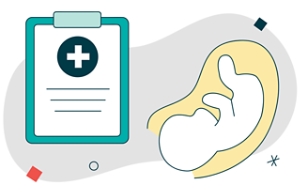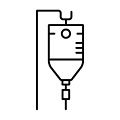Weeks 34 to 36 of Your Pregnancy: Care Instructions
Your belly has grown quite large. It's almost time to give birth! Your baby's lungs are almost ready to
breathe air. The skull bones are firm enough to protect your baby's head. But they're soft enough to move down
through the birth canal.
|

You might be wondering what to expect during labor. Because each birth is different, there's no way
to know exactly what childbirth will be like for you. Talk to your doctor or midwife about any
concerns you have.
|

You'll probably have a test for group B streptococcus (GBS). GBS is bacteria that can live in the
vagina and rectum. GBS can make your baby sick after birth. If you test positive, you'll get
antibiotics during labor.
|
|

|
Choose what type of pain relief you would like during labor. You can
choose from a few types, including medicine and non-medicine options. You may want to use several
types of pain relief.
|
|

|
Know how medicines can help with pain during labor. Some medicines
lower anxiety and help with some of the pain. Others make your lower body numb so that you will feel
less pain.
|
|

|
Tell your doctor about your pain medicine choice. Do this before you
start labor or very early in your labor. You may be able to change your mind during labor.
|
|

|
Learn about the stages of labor.
-
The first stage includes the early (latent) and active phases of labor. Contractions start in
early labor. During active labor, contractions get stronger, last longer, and happen more often. And
the cervix opens more rapidly.
-
The second stage starts when you're ready to push. During this stage, your baby is born.
-
During the third stage, you'll usually have a few more contractions to push out the placenta.
|
Follow-up care is a key part of your treatment and safety. Be sure to make and go to all
appointments, and call your doctor if you are having problems. It's also a good idea to know your test results
and keep a list of the medicines you take.
Current as of: July 10, 2023
Content Version: 14.0
Care instructions adapted under license by your
healthcare professional. If you have questions about a medical condition or this instruction, always ask
your healthcare professional. Healthwise, Incorporated disclaims any warranty or liability for your use of
this information.
© 2006-2024 Healthwise, Incorporated.